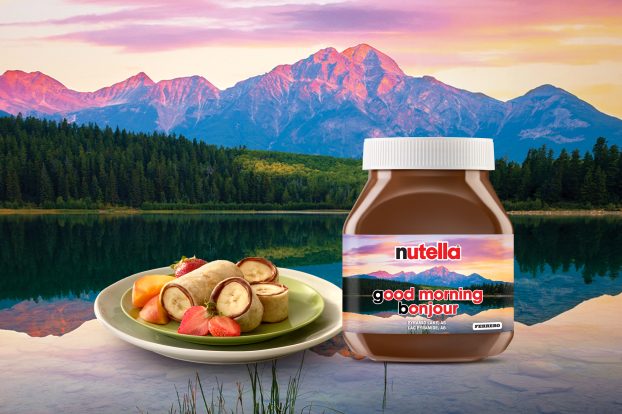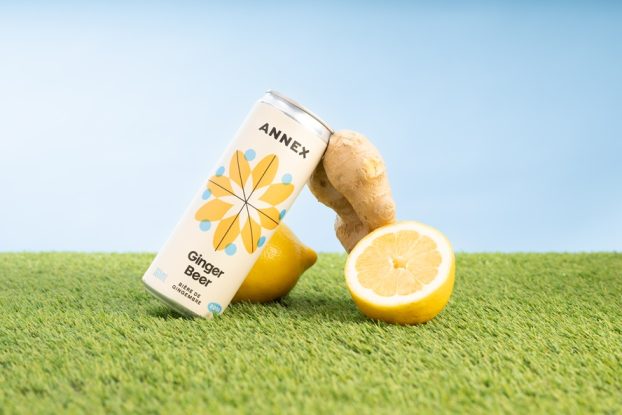In past years, as part of our annual Media Planning Challenge, we have invited media people to develop extensive and detailed media plans for non-existent products and services – Pizzazz Pizza, Executive Airlines and BodyGuard Insurance, among others – as a means of demonstrating creative media thinking.
In a new twist on an old theme, this year we asked a cross-section of prominent media buying firms to dig through their files in search of ‘The Best Plan that Never Ran.’
We asked participants to provide us with a 750-word summary of a plan developed for an existing client or new business prospect, that for one reason or another – budgetary constraints, change of heart – never went past the planning stage.
In order to protect the innocent, so to speak, we gave participants the option of masking the identity of their clients.
We also asked that the submission not be heavy on numbers. What we really wanted, we said, was a submission that was strong on ideas.
The intention was to provide readers some innovative media planning ideas in a cross-section of client categories.
The report includes submissions from Bates Canada, David Cairns & Company Media Management, Genesis Media, Leo Burnett, and Media Buying Services, all of Toronto.
The submissions continue to page 41.
David Cairns & Company Media Management
Trying to unearth a great plan that never actually ran is terribly difficult for us because, as one can well imagine, our work tends to be so great that it always runs exactly as we plan it.
‘Revision’ is a word totally foreign to us, and ‘cancellation’ does not appear in our vocabulary.
Because our strategies are so spot on the first time around, we at David Cairns & Company usually finish our work shortly after lunch and spend the rest of the afternoon dreaming up new and exciting terms for ‘reach’ and ‘frequency’ before knocking off around 4:30 p.m.
Because of the brilliance of our work, occasionally we actually get ahead of the brief, and are forced to shut down for a few days.
However, we did manage to find a media strategy far back in the files, that did not run.
The dusty document was marked ‘rejected’ and someone had vandalized it with lewd comments about the short-sighted client whose limited imagination we were forced to endure.
The plan was for a shopping centre in suburban Toronto.
The assignment consisted of developing a media strategy which positioned the mall as ‘The Better Fashion Shopping Experience,’ drawing traffic from the Etobicoke, Oakville, Mississauga and West Toronto trading areas.
Three key time periods were identified: the spring and fall fashion seasons, and Christmas.
Consideration was also to be given to tactical promotional events through the year.
Our recommendation focused on both the mobility and affluence of suburban residents.
Living in the suburbs and getting to the mall both demand car ownership.
Many suburbanites work in Toronto but shop in their area.
Thus, radio and outdoor as media vehicles made enormous sense, with newspaper as a flexible promotional medium.
However, we were committed to the most cost-effective and targeted use of media, so we needed to focus on the trading area as a sub-market of Toronto.
We conducted three analyses:
– A special BBM Bureau of Measurement radio analysis to determine the top stations within the trading area.
– An outdoor mapping analysis, which showed all the available signage on high-traffic routes within the trading area.
– A newspaper circulation analysis within the trading area.
Radio
Looking at selected postal codes, we discovered that the third-ranked Toronto station was, in fact, the top station within our sub market.
As well, the fifth ranked station – an all news format – performed almost 40% better against our trading area, which seemed to confirm our hypothesis that many of our target group are mobile, in cars.
We realized that, in negotiating with these stations, they would be priced on their Toronto position, resulting in tremendous efficiencies within the area we were targeting.
Outdoor
Rather than recommending one specific outdoor vehicle (thus maximizing production efficiencies but reducing media impact), we selected a mixture of 45 superboards, transit shelters, and posters on key routes surrounding the mall and through the trading area.
A handful of these signs were positioned near competitive shopping areas to remind the target group of our shopping advantage.
Newspaper
While the client had shown some interest in the upscale, business-focused Toronto daily, we showed that residents of our trading area were not disposed to that paper: a greater percentage of the circulation of Toronto’s ‘mass’ broadsheet paper was in our area and, in fact, consumers in our area were twice as likely as Torontonians in general to be readers of that paper.
We had also negotiated a package that would deliver much greater reach, with more insertions, at a lower cost.
Finally, we buttressed this recommendation with ongoing insertions in community papers to focus even more communications on the immediate trading area.
The resulting recommendation was a focused multiple-media strategy that delivered close to 40% more media into the trading area than the city in general, thus maximizing efficiencies and owning the competitive environment.
But we didn’t stop there.
As added elements to reinforce positioning, we sprinkled several creative ideas onto the plan, some of which included:
– A fashion magazine, which would be designed on a contract publishing basis by the Toronto-based creative agency Ranscombe & Company.
The magazine would be funded on a self-liquidating basis through the sale of advertising pages to mall tenants, and distributed through Canada Post to households in the trading area.
Coupons would be included in the magazine, both to encourage readership, and to drive traffic on a seasonal basis.
– Storefront displays, located on the fringes of the trading area.
We would locate empty storefronts in key areas, negotiate short term space, and position a travelling retail display, again funded by mall tenants on a self-liquidating basis, to generate immense publicity at minimal cost.
– The mall-family-on-display, consisting of real models posed in real-life displays in Toronto’s busy Union Station in the weeks leading to Christmas.
These models, portraying a family, would be seen by commuters (many from our trading area) each morning, and again in the evening, allowing us the opportunity to present selected fashions twice daily.
The family would be presented in themed situations: trimming the tree, going skiing, preparing for work and school.
Thus, again on a self-liquidating basis, mall retailers would be invited to fund the display and provide the fashions in a high-profile, publicity-generating, tactical event.
This strategy was not accepted and, of course, the resulting effects are well-documented: the worst winter in recent decades, an increasingly violent prime minister, hockey star Wayne Gretzky traded.
It could all have been so easily avoided.
Bates Canada
In the competitive women’s fragrance business, a launch has to excite as much comment, and turn as many heads, as the fragrance itself.
Witness the recent and controversial Black Pearls/Elizabeth Taylor involvement with four cbs sitcoms.
So we at Bates were excited by the challenge of the spring launch of a new fragrance – let’s call it Bouquet – directed to women 18-34.
Bouquet would be available primarily in department stores.
Media support would focus on major markets in English Canada, with Toronto a priority by virtue of its anticipated volume contribution.
The timing was the spring fashion season: March through June.
In the critical early planning stage, we needed to build a complete picture of the Bouquet consumer, demographically and psychographically.
The client’s own tracking study data was utilized, as was pmb data on fragrance users.
We also delved into Bates’ proprietary study, GlobalScan, which is particularly useful in confirming demographic profiles and in fleshing out media consumption habits, lifestyles and attitudes.
By compiling profiles of other popular fragrances targeted to women 18-34, we synthesized a portrait of ‘The Bouquet Woman.’
The Bouquet Woman is young, say about 25, a university graduate who works in sales because she has not yet found a job in her chosen field.
She is very social, enjoying nights out with friends at movies, restaurants and concerts.
She watches Melrose Place, turns to the daily newspaper occasionally, listens to Dr. Laura and to adult contemporary radio and reads Toronto Life Fashion.
She likes to look attractive to members of the opposite sex, feels she has more self-confidence than most of her friends, and buys the best skin and haircare products that she can afford.
Understanding this consumer allowed us to shape a plan that delivered targeted reach and high frequency.
Targeted reach meant communicating not with any women 18-34, but with the right women 18-34, in a way that was meaningful and relevant to them.
High frequency was necessary to break through the category ‘noise’ and bring Bouquet top-of-mind.
The other media objectives for the launch were to provide a dominant, continuous presence for Bouquet during this key sales period, to enhance the fragrance’s youthful brand image through distinctive visual presentation and complementary media environment, to extend consumer activity in store and to maximize the dollar investment.
To satisfy these objectives, we needed to structure the optimal media mix, working from the ground up, one medium at a time.
We also wanted to work closely with suppliers to generate ideas that push the communication limits of the medium, and build in cross-media synergies where possible.
Added value would be an important component as long as it was relevant to Bouquet and consistent with objectives.
Women’s magazines were the backbone of the plan.
Selected titles, seen as fashion/beauty authorities, provided targeted reach, continuity and a complementary environment.
Double-page spreads upfront (inside front covers negotiated at no premium) would maximize visual impact, and scentstrips would be used to allow consumers to sample Bouquet.
Knowing that the Bouquet woman was a frequent theatregoer, we put together a promotion that centred on the Feb. ’95 opening of the rock opera Tommy at the Elgin Theatre in Toronto.
The advertising package encompassed pages in the Tommy program (with category exclusivity), and two product sampling evenings at the theatre, including signage.
We would hook up with a retail partner (perhaps Eaton’s), secure a display window to advertise both the show and Bouquet, and arrange for a cast performance of selected numbers at noon outside Eaton’s fragrance department at the Eaton Centre, a shopping mall in downtown Toronto.
There would be a contest presented by Bouquet and Eaton’s, for Bouquet customers at Eaton’s and for attendees of Tommy.
And lastly, complimentary tickets could be given to key buyers and salespeople.
Cinema advertising represented the second tier.
We had the opportunity to pick up 60 sec. creative from Europe that was exciting, sensual and perfectly suited to the cinema experience and we knew the Bouquet woman was an avid moviegoer.
Bates’ experience with Cineplex-Odeon on Dentyne gum had shown that the exclusivity, lack of clutter and high advertising recall scores in movie theatres would create dominance.
In addition to the 8-week on-screen campaign, we would provide samples of Bouquet to cinema patrons in our target group, giving them a postcard-sized package when leaving the cinema, featuring a retailer-tied, gift-with-purchase offer.
The third tier was the use of backlit subway posters in the high-volume Yonge/Bloor and Union stations.
Bouquet’s magazine creative would be replicated and retailer tags added: The Bay for Yonge/Bloor locations, Eaton’s for posters in Union station.
A 12-week campaign would generate high frequency against these young women who use the subway for both work and leisure-related travel in this important market.
Understanding the habits and lifestyle of the Bouquet consumer was the key to this launch campaign, sparking us to seek media solutions beyond the conventional.
Leo Burnett
This plan, for a food and beverage product, is about brand contact points.
It’s about surrounding the consumer with relevant opportunities to have a meaningful interaction with the brand and its message, in environments conducive to reception of that brand message.
Given a target group of 12- to 24-year-olds, it was first determined by Leo Burnett Media that the target was really two separate groups:
1) 12- to 17-year-olds; and
2) 18- to 24-year-olds.
It was further determined that each group has different lifestyles (and therefore different relationships with communication vehicles) requiring two separate communication efforts synergized into a single, cohesive plan.
No single medium could address this.
After all, how much does a 14-year-old really have in common with a 23-year-old?
This target segmentation and lifestyle recognition acted as the blueprint against which all communications would be developed and ultimately measured.
The next step prior to communication selection was to clearly identify and understand the brand character.
Almost always the brand character leads to communication considerations and insights not necessarily obvious and traditional.
In this instance, the brand character is fun, new, progressive, ‘weird’ and unique.
The communication objective was to generate awareness and trial of the product through a targeted communication plan designed to convey the brand character.
Sampling is critical. Continuity is important.
The plan was never executed due to a change in overall corporate emphasis.
The recommendation:
The first component of the communication plan is conventional television with flights in the spring and fall.
These flights are supported with the addition of elaborate sponsorships on the youth specialty services ytv and MuchMusic.
The ytv commitment is dedicated to two key properties reflecting the brand character. In one case, the programming and the new television spot are very similar in content and tonality.
The 26-week ytv sponsorships are on It’s Alive and Hit List.
In both instances, the brand receives the standard billboards, a feature segment (for example, video pick-of-the-week), in-program signage, product integration in the programs and sampling.
The MuchMusic 52-week sponsorship is on The Wedge, a program in-line with the brand character.
While the sponsorship itself consists only of billboards, Leo Burnett Media negotiations include access to Citytv/MuchMusic live audiences for sampling purposes.
Programs such as Electric Circus and Intimate and Interactive provide excellent targeted sampling opportunities.
As well, other brands (with different target groups) can gain access to live audiences via the Canadian Music Video Awards, Cityline and tours.
Accompanying the sponsorship is a 26-week advertising schedule.
While both the ytv and MuchMusic sponsorships do not provide the heavy grp (Gross Rating Points) deliveries found in the conventional television component, they do provide grps with a relevance to the target – thereby increasing acknowledgement of the message and resulting in greater impact.
Running in conjunction with television is radio, perhaps the most relevant brand contact point for the target group.
Just count the number of musical groups’ names written on the jackets, t-shirts and knapsacks of teens. Face it, all of us were – and some still are – defined by the music we consume.
A 13-week summer radio campaign is bolstered by an original feature relevant to the consumer because it provides interesting, obscure information about the content on the station to which they are listening.
The radio supplier would produce and write (in consultation with Leo Burnett), 45 50-sec. billboarded vignettes about teen music, bands, lifestyles and attitudes, to run throughout the campaign.
The final four weeks of the campaign includes a promotion at double the weight levels.
Listeners are encouraged to call a 1-800 number, answer a question derived from the vignettes and qualify to win one of thousands of current cds and an all-expenses paid trip to see three major recording acts play in the u.s.
The database derived from the promotion can be used for research purposes.
Radio also provides outstanding targeted sampling opportunities throughout the summer.
Leo Burnett Media deemed it necessary to provide additional brand contact points for the 12-17 portion of the target.
This would be done through the teen publication PopLife and consists of a page of sponsored ‘editorial’ building on the radio vignettes mentioned earlier.
The next component of the plan is the addition of city newspapers such as Toronto weeklies now and eye and Vancouver weekly The Georgia Straight, which deliver the 18-24 portion of the target and provide an aspirational or ‘wannabe’ factor for the 12-17 segment.
These publications, because of their alternative editorial content, work naturally with radio to reinforce the brand message.
A two-month summer campaign is recommended to capitalize on the multitude of highly publicized concerts and events.
The city newspapers also provide good integrated promotional opportunities, (for example, bring purchased product to the publication’s office and win free cds, t-shirts, or concert or movie tickets), and unique sampling opportunities at nightclubs and concerts.
The publications’ on-line services would also be utilized to extend the brand contact opportunity.
Because television and radio would be executed against teens, additional support is required for the 18-24 portion of the target.
This would be achieved with the addition of Campus Klips, the national university/college video program, by establishing the brand message in relevant environments such as student pubs, cafeterias and lounges.
This represents a low-cost opportunity to provide seven months of continuity for the brand.
Another print component of the communication plan is the combination of the Campus Canada and Network campus newspaper and magazine operations, which reach the target group in colleges, universities, music stores and entertainment venues.
Once again, a page of ‘editorial’ would rework the radio vignette material while campus sampling would be executed via the Campus Canada Caravan.
Continuity would be provided over a 12-month period.
The final component of the plan is a summer campaign of street posters (or ‘post-no-bills’ posters) in urban centres.
Coinciding with the radio and city newspapers buy, the additional brand contact points provide a sense of ubiquity while addressing the brand character and message theme.
The summary:
This plan is about creating strategic communication that reaches the consumer in unique and interesting ways.
It’s about fusing the medium and the message within the consumer’s lifestyle.
It’s about inviting the consumer to the message. It’s about intuition as well as numbers.
It’s about an integrated creation that would be a blast for the client and Leo Burnett Media to execute.
That’s about it.
Media Buying Services
The product, athletic footwear, has national distribution, but is not the number one player in the Canadian marketplace.
Objectives:
The client’s corporate objective is to become the no.1 manufacturer of athletic footwear in Canada.
The communication objective is to elevate the brand to icon status by making it highly desirable, appealing to trend setters and above all, ‘cool.’
A secondary objective is to ensure that all communication provides more information about where to buy the product, in order to drive consumers to retailers.
The target group is persons aged 16-28, with a highly urban skew.
Psychographic research indicates the target group is hip, cool and irreverent – in other words, Mom definitely does not buy their shoes.
Media strategy:
– Concentrate in high-profile media assaults to provide maximum impact (vigorous, short-term ‘assaults.’)
– Utilize relevant and consistent media environments to give the program focus.
– Develop street-level national events to ensure the program is ‘in-your-face.’
Two tactics would be employed to achieve communications objectives:
Core media – a combination of television and new media, the latter to address the consumer in his or her own environment.
Event media – tv, newspaper, radio and campus events (signage, washroom advertising and retail kiosks).
Core media:
The brand-sell buy would run from January to October, using television.
Properties include:
– baseball (focus on play-offs, finals)
– awards shows (Grammys, American Music Association awards, mtv awards)
– nba basketball (in-program feature on ‘basketball style’ – clothes, shoes)
– blockbuster movie specials (premiers, sports-related movies)
– Molson Hockey Night in Canada (focus on play-offs, finals)
– MuchMusic (‘street style’ feature in RapCity)
– 1996 Summer Olympics in Atlanta, ga (worldwide sponsor)
The buying strategy would include the purchase of multiple spots in each program for maximum impact, as well as exclusivity, billboards and bumpers.
The second component of core media includes an Internet Web site. The client’s cutting-edge site would be expanded to incorporate all marketing activities, specifically ‘the event.’
Part of the strategy would be to identify the fastest-growing sites and hot-link them to the client’s.
The core media strategy would deliver 2,000 Gross Rating Points (grps).
Event media:
‘Hoop Dreams,’ which takes its name from a prize-winning documentary about aspiring basketball players, is the event-media portion of the strategy.
It would consist of street-level basketball events which capitalize on the excitement and anticipation in the months leading up to the Olympics in Atlanta.
Hoop Dreams culminates in a Canadian university/college all-star team playing Olympic basketball teams from around the world.
University/college all-stars would be recruited via local campus events, the Web site and local retailers.
The broadcast partner, The Sports Network (tsn), would be involved in all components, providing ongoing communications and forced-tuning promotions.
All aspects of tsn’s media components (radio, Internet, and so on) would be incorporated into the program.
The cross-country game tour could be broadcast live on tsn, with all proceeds from the games donated to local athletic programs.
The event would wrap on a cbc primetime special – highlighting the entire program – to be broadcast on the eve of the Olympics.
Genesis Media
A communications company was seeking to increase market penetration of its portable product and increase the size of its user base.
The company was faced with a tight media budget, the imperative protection of its strongest region, Ontario, and a mandate to improve underdeveloped Western sales.
In addition, the company wanted to increase sales during the key category second quarter volume period, a period when its sales were underdeveloped.
Media solution:
The recommended media strategy was the addition of a service station chain to the client’s distribution channel.
The strategy worked well for a number of reasons:
– The chain outlets were synergistic with product usage; the product is frequently used in automobiles.
– The recommended service station chain was more dominant in the West than the East and would increase the product’s Western distribution by 50%.
-The plan would make use of the chain’s branded signage as a unique medium for outdoor postings. This signage would provide excellent coverage of the Western markets and good coverage in the East.
– The product’s availability at chain stations would be an additional service option for station chain customers and provide a point of difference for both the service stations versus their competition and for the product within its own category.
– In addition, the product’s availability, with advertising support, would benefit chain traffic while the product itself would enjoy both media coverage for no media cost and significantly improved Western distribution: a win/win strategy.
Execution:
1) Timing – The plan’s executional tactics focused on the key Q2 (make or break) volume period, in order to address this period’s increased sales potential (product sales underdeveloped during this quarter and overdeveloped during lower category quarters) and address the Western underdevelopment.
2) Promotion – An eight-week contest/coupon promotional event was designed to run in all markets during the key Q2 volume period to drive sales and market share via prizing opportunities and coupon discounts.
A negotiated media-supplied trip, with target/product synergy, was the promotion incentive.
Creative to run on the chain’s outdoor postings would advertise the contest/promotion and communicate the availability of both the product and contest entry forms.
3) Western push – In addition, to help push the underdeveloped Western markets, a ‘purchase points’ program was to be established in the West based on consumer expenditures at the chain.
The points plan would run in the Western markets indefinitely, but would launch in conjunction with the contest/coupon promotion.
The collection of points during the eight-week promotion could be used in conjunction with the contest couponing and would make the promotion work even harder in the West to drive both product sales and chain volume.
Media support in top
markets:
1) Television – Planned media support targeted the top volume markets in each region.
Television was to precede the eight-week Q2 promotional event to re-establish awareness. A branded promotional message was to air during the promotion itself.
Television tags during the promotion would also drive viewers to both their daily newspapers for details/entry forms and to their key market radio station.
Following the promotion, television was to continue, in flights, through Q3 and the beginning of Q4, in key volume markets.
2) Radio – High frequency radio schedules would air the core promotional campaign and send listeners to their daily newspapers.
3) Newspaper – Newspaper copy would contain promo/contest entries to be submitted to the distribution outlets (including the ‘new’ chain) or the lead radio stations participating in the promotion, and would drive tuning to specific dayparts when winners would be announced.
Summary:
The service station chain distribution would aid market penetration (specifically in the West) with outlets synergistic to the product.
In addition, the new and different use of the chain signage as a medium for the product would make the campaign visible while supporting the new distribution outlets.
The signage-as-medium for no media cost enabled the concentration of the tight media budget in the key Ontario region, while providing outstanding Western coverage.























